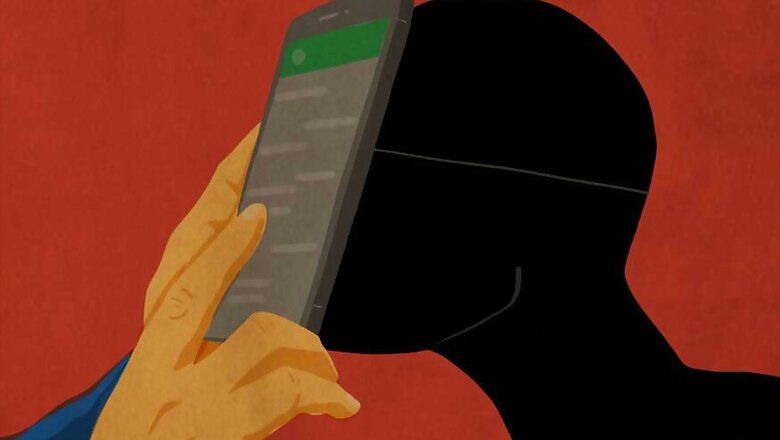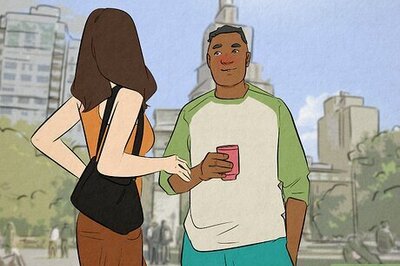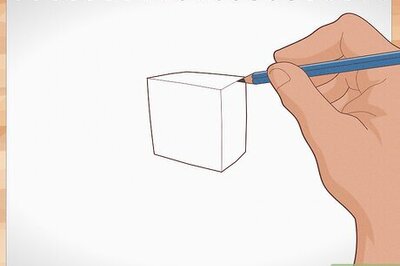
views
New Delhi: There are some WhatsApp messages doing the rounds in poll-bound Rajasthan which claim that hundreds of sadhus were killed during an agitation for cow slaughter ban during Indira Gandhi’s regime. They also claimed that the then Prime Minister herself gave the nod for the firing. Nothing could be farther from the truth.
Here are the facts: On 7 November 1966, thousands of gau rakshaks, with sadhus and other religious leaders among them, marched towards Parliament demanding a law banning cow slaughter across the country.
Led by the Bharatiya Jan Sangh MP from Karnal, Swami Rameshwaranand, the crowd marched menacingly towards the Parliament House complex, clearly meaning to storm it. There was little security to protect Parliament so the guards on duty hurriedly closed the gates. The infuriated agitators went berserk and started attacking government buildings on Parliament Street. The police had to open fire, killing eight sadhus.
There was widespread condemnation of the police firing and the government’s inept handling of the situation. Prime Minister Indira Gandhi, sensing the disquiet, sacked veteran politician Gulzarilal Nanda, who was then the home minister. Nanda had served twice as a caretaker PM, when Jawaharlal Nehru and Lal Bahadur Shastri died within a span of less than two years, and was a respected senior figure. He was, however, also a patron of the Bharat Sadhu Samaj and widely seen as sympathetic to the protesters’ cause. The development did not have any immediate fallout but in 1967, Indira saw rise of regional parties who were backed by RSS-Jan Sangh across the country. For the first time, nine Indian states had non-Congress governments.
The cow slaughter issue subsequently forced Indira Gandhi to set up a panel under a retired Supreme Court chief justice AK Sarkar to see if a nationwide ban on cow slaughter was feasible. She daringly made RSS chief MS Golwalkar a member of the panel, along with the Shankaracharya of Puri, V Kurien of the National Dairy Development Board, economist Ashok Mitra and others.
Kurien later wrote that Golwalkar admitted to him in so many words that the RSS had launched the November 1966 campaign to embarrass the government and with definite political objectives in mind. The committee’s initial mandate was to submit a report in six months’ time but it kept delaying until it was dismissed in 1979 by the Moraji Desai government.
The issue of cow slaughter had been alive throughout country’s elections since 1951. In 1951-52, Prime Minister Jawaharlal Nehru’s opponent in Phulpur Lok Sabha seat was Swami Prabhu Dutt Brahmachari who had fought the election on the plank of cow protection. Brahmachari was supported by the Akhil Bharatiya Ram Rajya Parishad and the All India Hindu Mahasabha, two radical right-wing groups. Brahmachari garnered only 56,718 votes and lost his security deposit.
The January 28, 1952 issue of Time magazine had recorded Brahmachari as one “who wears a luxuriant grey beard, orange-and-red-rimmed spectacles, a saffron robe and a long white loincloth." The article added, "Holy Man Brahmachari toured Nehru's constituency in a 1931 Dodge sedan accompanied by a troupe of Hindu singers. To the chanting of Hindu psalms, he danced on the platform, rhythmically tapping a pair of small brass cymbals. A disciple read from a pamphlet he had written.” Brahmachari had taken a vow of silence but his pamphlet had accused Nehru of letting cow slaughter in Independent India.
(The author is a senior journalist. Views are personal)
















Comments
0 comment